Understanding Diesel MSDS in Australia: A Guide to Safe Handling and Compliance
Safeguarding workers, the environment, and operations through proper diesel management and documentation
Diesel fuel powers much of Australia’s industry from transportation and agriculture to mining and construction. It keeps our vehicles moving, machinery running, and generators operating during critical power outages. Yet, while it is an essential energy source, diesel also presents significant safety, health, and environmental hazards if not properly managed.
To ensure that everyone handling, storing, or exposed to diesel is informed and protected, regulatory bodies in Australia require clear documentation known as a Material Safety Data Sheet (MSDS) or more recently, a Safety Data Sheet (SDS). Understanding and applying the information contained within these documents is fundamental to compliance and workplace safety.
This article explores everything you need to know about diesel MSDS Australia, including what it is, why it matters, how to interpret it, and how to manage diesel safely within Australian regulatory frameworks.
What Is an MSDS and Why Is It Important?
A Material Safety Data Sheet (MSDS) is a technical document that provides essential information about a chemical’s properties, potential hazards, and safe handling procedures. In Australia, the terminology transitioned to Safety Data Sheet (SDS) under the Globally Harmonised System of Classification and Labelling of Chemicals (GHS). However, many industries and organisations continue to use the term MSDS, particularly when referring to diesel fuel.
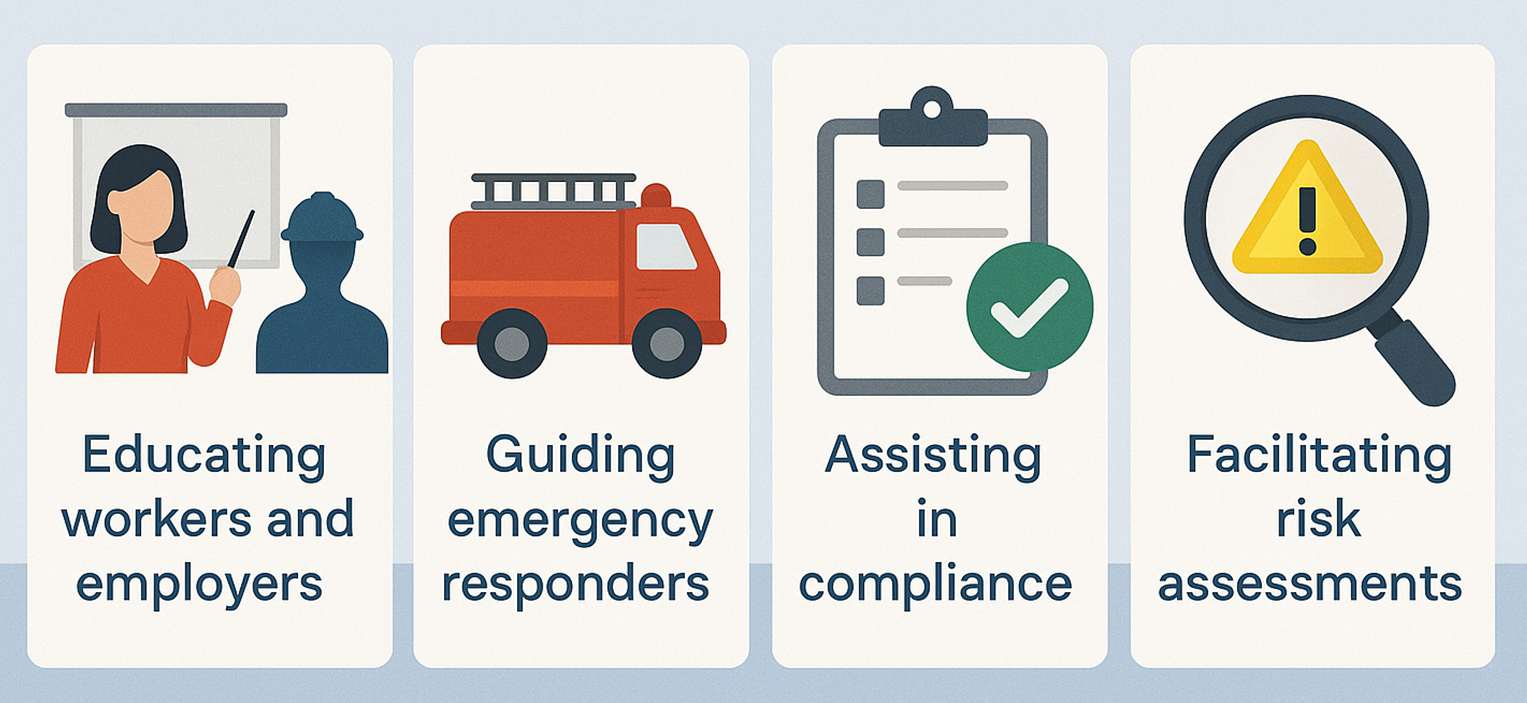
The MSDS (or SDS) serves several vital functions:
- Educating workers and employers about the risks associated with diesel exposure.
- Guiding emergency responders on what to do in the event of spills, leaks, or fires.
- Assisting in compliance with Australian Work Health and Safety (WHS) laws and environmental regulations.
- Facilitating risk assessments and safe system design for workplaces handling diesel.
Every supplier and manufacturer of hazardous substances in Australia must provide an up-to-date SDS that complies with national standards, specifically Safe Work Australia’s Code of Practice on Preparation of Safety Data Sheets for Hazardous Chemicals (2020).
Understanding Diesel as a Hazardous Substance
Diesel is a complex mixture of hydrocarbons derived from crude oil. It is classified as a hazardous substance and a dangerous good, which means it presents physical, health, and environmental hazards that must be carefully managed.
Physical Hazards

- Flammability: Although less volatile than petrol, diesel can ignite under certain conditions. Its flash point typically ranges between 52°C and 96°C.
- Explosion Risk: Vapour accumulation in confined areas may lead to ignition if exposed to sparks, flames, or static electricity.
- Reactivity: Diesel can degrade rubber and plastic components, and its vapours may react with oxidising agents.
Health Hazards
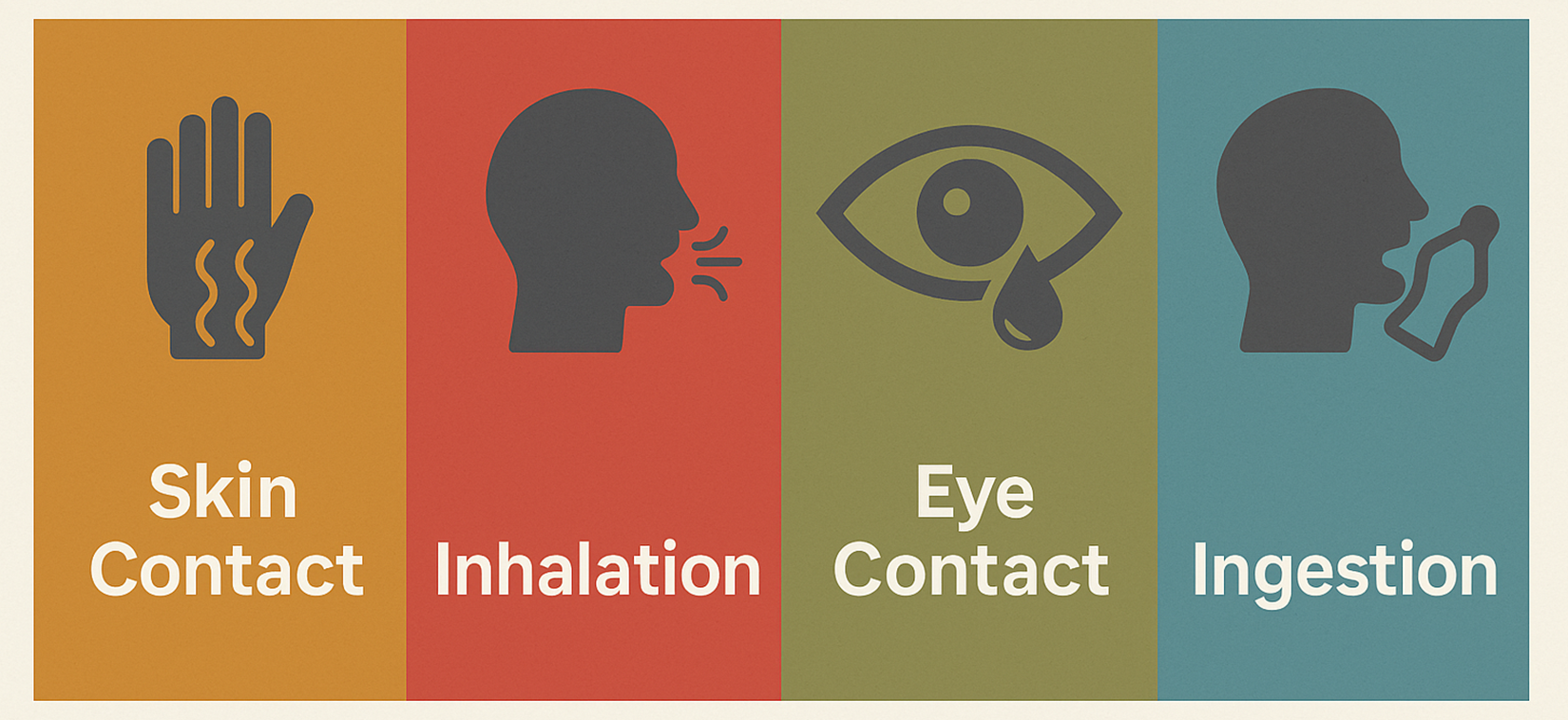
- Skin Contact: Prolonged exposure can cause irritation, dermatitis, or skin defatting.
- Inhalation: Breathing diesel vapours or exhaust particulates may cause respiratory irritation and long-term health impacts.
- Eye Contact: Diesel splashes can cause moderate irritation and redness.
- Ingestion: Swallowing even small amounts may result in chemical pneumonitis, nausea, or vomiting.
Environmental Hazards
Diesel poses a high risk to aquatic ecosystems. Spills can contaminate soil, groundwater, and marine environments, leading to long-term ecological damage. Strict environmental controls are therefore required under both Commonwealth and state environmental protection legislation.
The Structure of a Diesel MSDS
A diesel MSDS Australia follows the internationally recognised 16-section format under the GHS.
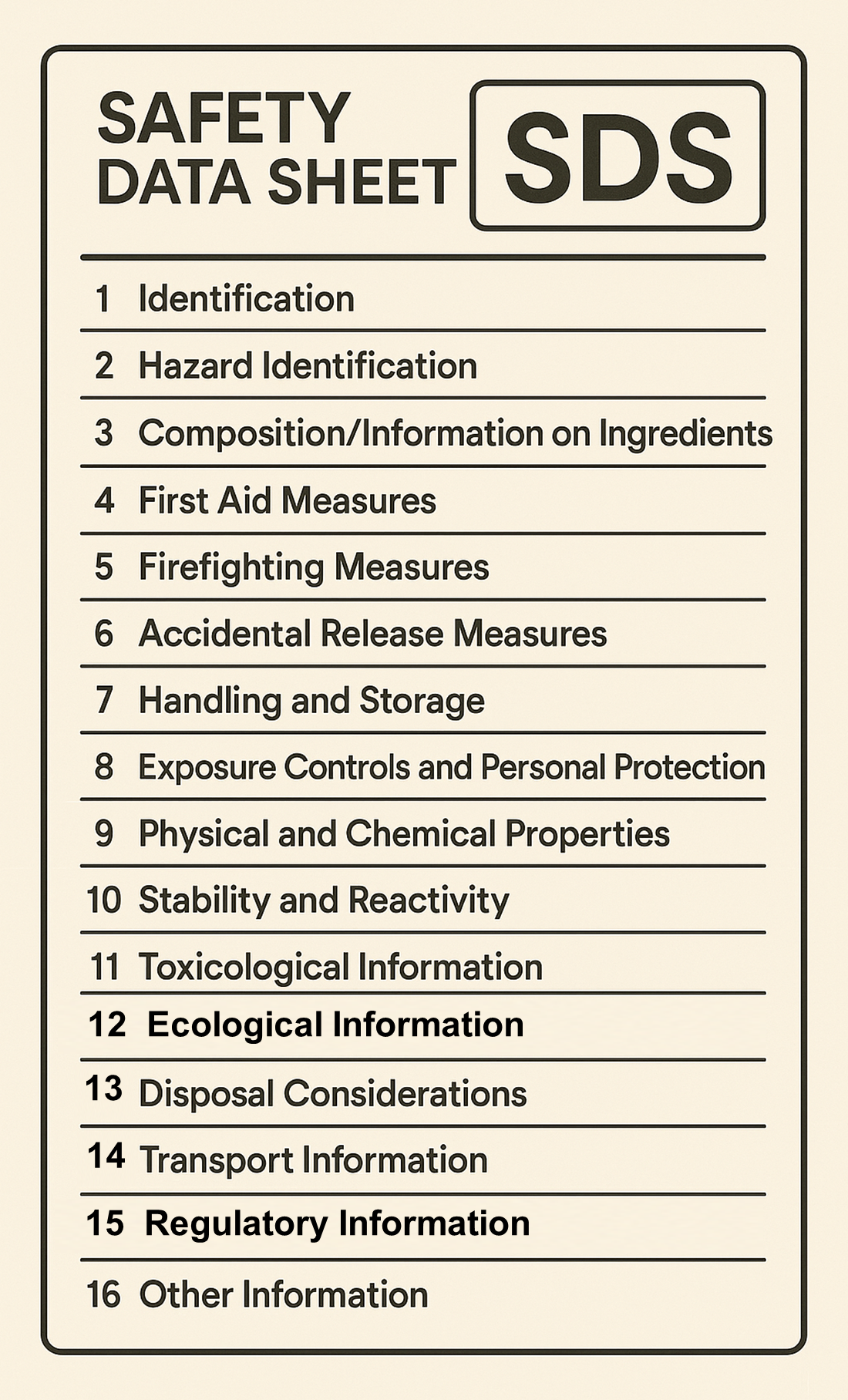
Each section provides detailed guidance to ensure safe handling and response to emergencies.
1. Identification
This section lists the product name (Diesel Fuel), supplier details, emergency contact numbers, and recommended use. It distinguishes diesel from similar fuels like kerosene or biodiesel blends.
2. Hazard Identification
Outlines hazard classifications such as Flammable Liquid – Category 3 and Aspiration Hazard – Category 1. Pictograms and signal words (“Danger”) are displayed alongside precautionary statements.
3. Composition/Information on Ingredients
Details the chemical composition, including hydrocarbon content, additives, and potential impurities.
4. First Aid Measures
Provides instructions for immediate medical treatment in case of inhalation, ingestion, or skin/eye contact. For example, it warns not to induce vomiting if diesel is swallowed, as aspiration can lead to severe lung injury.
5. Firefighting Measures
Describes suitable extinguishing media (e.g., foam, dry chemical powder, or CO₂), firefighting precautions, and combustion hazards. Diesel fires release toxic fumes such as carbon monoxide and unburned hydrocarbons.
6. Accidental Release Measures
Explains spill containment, personal protective equipment (PPE) requirements, and environmental protection steps. It emphasises preventing diesel from entering drains or waterways.
7. Handling and Storage
Guidelines for safe handling such as avoiding open flames and static build-up—and storage requirements, including the need for bunded areas and ventilation.
8. Exposure Controls and Personal Protection
Recommends control measures like ventilation, respirators, gloves, and protective clothing. It also lists Australian exposure standards under Work Health and Safety Regulations.
9. Physical and Chemical Properties
Provides technical specifications such as appearance (pale yellow to brown liquid), boiling point (150–380°C), flash point, and specific gravity.
10. Stability and Reactivity
Lists conditions and materials to avoid, such as strong oxidisers and high heat.
11. Toxicological Information
Outlines acute and chronic effects of exposure, toxic doses, and relevant studies on carcinogenicity.
12. Ecological Information
Describes the potential for bioaccumulation, persistence, and aquatic toxicity.
13. Disposal Considerations
Guidance on proper disposal through licensed waste contractors and prohibitions against dumping into sewers or natural waterways.
14. Transport Information
Covers dangerous goods classification under the Australian Dangerous Goods (ADG) Code, including UN number 1202 and packing group III.
15. Regulatory Information
Lists applicable Australian standards, WHS regulations, and environmental laws.
16. Other Information
Includes references, revision dates, and contact details for further enquiries.
Regulatory Framework for Diesel Safety in Australia
Managing diesel safely in Australia requires compliance with multiple layers of legislation and standards.
1. Work Health and Safety (WHS) Regulations
Under the Model WHS Regulations (2011) adopted across most Australian jurisdictions, employers must identify hazardous chemicals, keep SDSs accessible, and maintain a hazardous chemicals register. Workers must be trained in safe handling and emergency response procedures.
2. Dangerous Goods Transport and Storage
The Australian Dangerous Goods Code (ADG 7.8) provides classification and labelling requirements for transporting diesel by road and rail. It defines packaging, signage, and vehicle placarding obligations.
3. Environmental Protection Legislation
Each state and territory enforces laws to prevent diesel contamination. For example:
- Environment Protection Act 2017 (VIC) – requires immediate reporting of diesel spills that pose environmental risk.
- Protection of the Environment Operations Act 1997 (NSW) – governs fuel storage and spill prevention.
- Environmental Protection Act 1994 (QLD) – mandates containment systems for above-ground diesel tanks.
4. Australian Standards
Relevant standards include:
- AS 1940:2017 – The Storage and Handling of Flammable and Combustible Liquids
- AS/NZS 60079 – Explosive Atmospheres
- AS 2809 – Road Tank Vehicles for Flammable Liquids
Compliance with these standards helps ensure that diesel facilities are designed, constructed, and operated safely.
Diesel Storage Requirements
Improper diesel storage is one of the leading causes of workplace fires and environmental contamination.
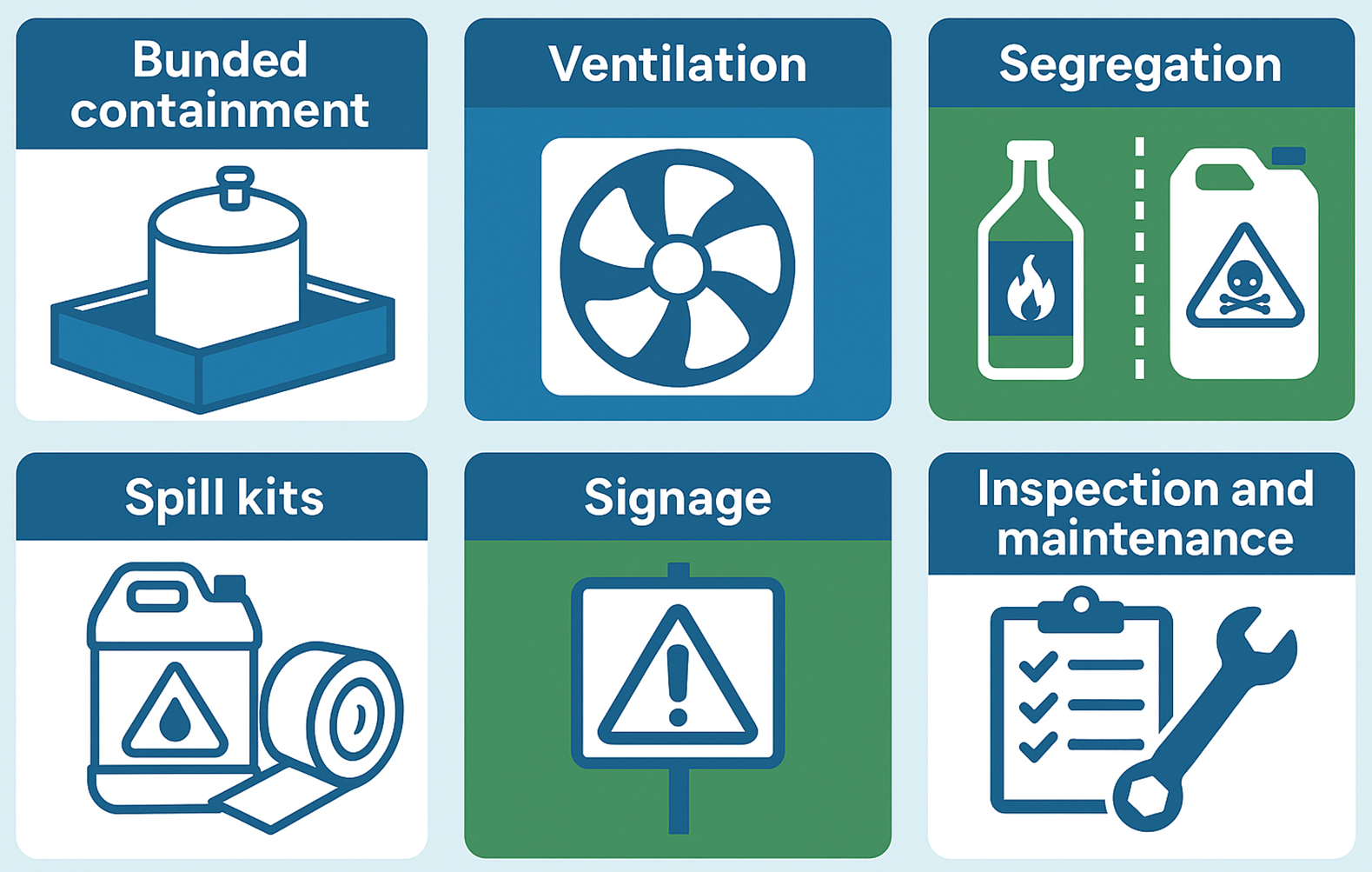
Key requirements include:
- Bunded containment: Diesel tanks must be placed within bunds capable of holding at least 110% of the largest tank’s volume.
- Ventilation: Adequate airflow prevents vapour build-up in enclosed spaces.
- Segregation: Diesel should be stored away from oxidising agents, acids, and ignition sources.
- Spill kits: Readily available near storage areas for immediate containment.
- Signage: Clear hazard and “No Smoking” signs must be displayed.
- Inspection and maintenance: Regular checks for leaks, corrosion, or valve failure.
Diesel Handling and Personal Protection
Safe handling practices are essential for any workplace using diesel.
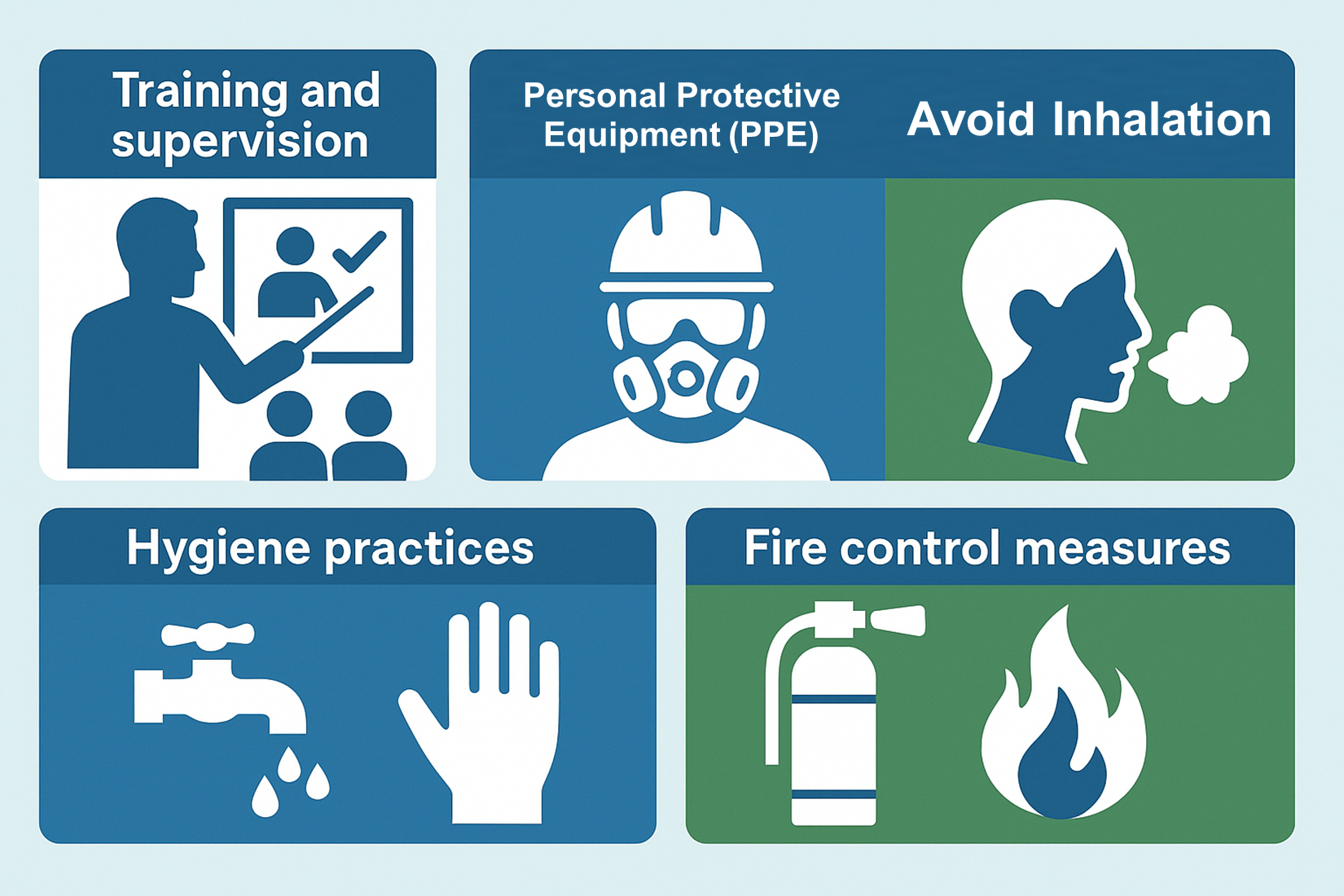
Key controls include:
- Training and supervision – Workers must understand the hazards and procedures outlined in the diesel MSDS.
- Personal Protective Equipment (PPE) – Including nitrile gloves, chemical goggles, long sleeves, and safety boots. Respiratory protection may be required in poorly ventilated areas.
- Avoiding inhalation – Never use diesel in confined spaces without adequate ventilation.
- Hygiene practices – Wash hands thoroughly after handling and avoid eating or smoking in fuel handling areas.
- Fire control measures – Keep extinguishers rated for Class B (flammable liquids) fires nearby.
Diesel Spill and Emergency Response
Even a small diesel spill can cause environmental harm.

The diesel MSDS Australia outlines specific actions to control and clean up spills safely.
These typically include:
- Evacuating the area if large quantities are released.
- Eliminating ignition sources such as cigarettes, tools, or electrical equipment.
- Using absorbent materials (e.g., sand, vermiculite) to contain and collect diesel.
- Reporting to authorities if the spill enters drains or watercourses.
- Disposing of waste properly through licensed hazardous waste facilities.
Emergency responders must also be aware of the potential for toxic fumes and wear appropriate PPE when entering contaminated zones.
Health Monitoring and Long-Term Exposure
Repeated diesel exposure can have cumulative health effects. Diesel exhaust, classified as a Group 1 carcinogen by the World Health Organization (WHO), contains particulate matter and nitrogen oxides that may cause lung damage and cancer after prolonged exposure.
For workers in transport depots, mines, or maintenance facilities, employers must conduct air monitoring and provide health surveillance in accordance with WHS Regulations. Control measures such as local exhaust ventilation and diesel particulate filters (DPFs) should be implemented where applicable.
Updating and Accessing Diesel MSDS in Australia
Suppliers are legally obligated to review and update their SDS every five years, or sooner if new information becomes available about the chemical’s hazards.

To ensure compliance, workplaces should:
- Maintain a current SDS register accessible to all workers.
- Verify revision dates during procurement and audits.
- Digitally store SDS files within workplace safety management systems for quick retrieval.
- Train employees on how to interpret and apply SDS information in daily operations.
Many organisations, including Safe Work Australia, Fuel suppliers, and chemical databases, offer free access to updated SDSs for diesel and other fuels.
Environmental Management and Spill Prevention
Beyond workplace safety, responsible diesel management is critical for environmental protection. Contaminated soil and groundwater are costly to remediate and can attract significant penalties.
Preventive measures include:

Companies that handle large volumes of diesel, such as transport depots or construction sites, should have a Spill Response Plan integrated into their Environmental Management System (EMS).
Training and Competency Requirements
Australian WHS law requires that workers handling hazardous chemicals are competent in their safe use.
Diesel training should cover:

Training records should be maintained and reviewed during audits to verify ongoing competency.
Digital Safety and Modern Compliance Tools
With digital transformation accelerating across industries, many organisations are moving away from paper-based systems to manage hazardous substances electronically.
Cloud-based WHS management platforms allow for:
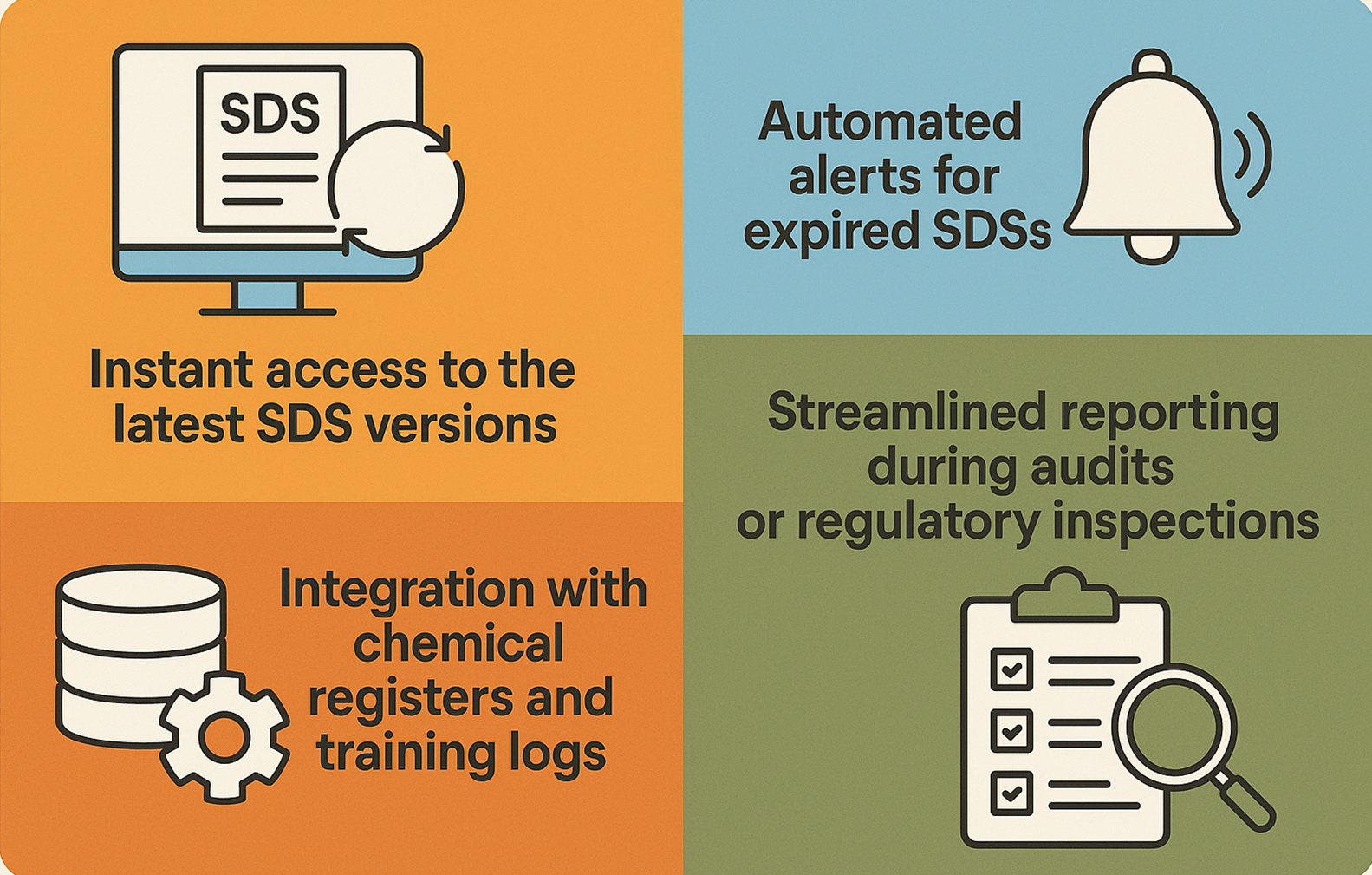
By leveraging these systems, companies can improve accuracy, accountability, and overall compliance.
Conclusion
Diesel remains a cornerstone of industrial and commercial activity throughout Australia. However, its safe management requires a deep understanding of its hazards, proper documentation, and robust workplace controls.
A diesel MSDS Australia provides the essential foundation for safety detailing the risks, handling instructions, and emergency procedures needed to protect workers, property, and the environment. By ensuring that every workplace maintains current and accessible safety data, businesses not only comply with legal requirements but also foster a culture of responsibility and care.
Incorporating diesel safety into daily operations through training, regular reviews, and technological integration helps prevent accidents, reduce environmental impact, and promote long-term sustainability.
Whether you manage a fleet of vehicles, operate a construction site, or oversee a rural property, understanding and applying the principles of a diesel MSDS Australia is critical. Safety begins with awareness, and awareness starts with the right information.
Related Content
Join Our Newsletter
Receive expert insights, safety updates, and the latest updates in our services and apps. Stay ahead of workplace safety, compliance, and operational efficiency delivered straight to your inbox.

.png)
.png)
.png)
.png)
.png)
.png)
.png)
.png)
.png)
.png)